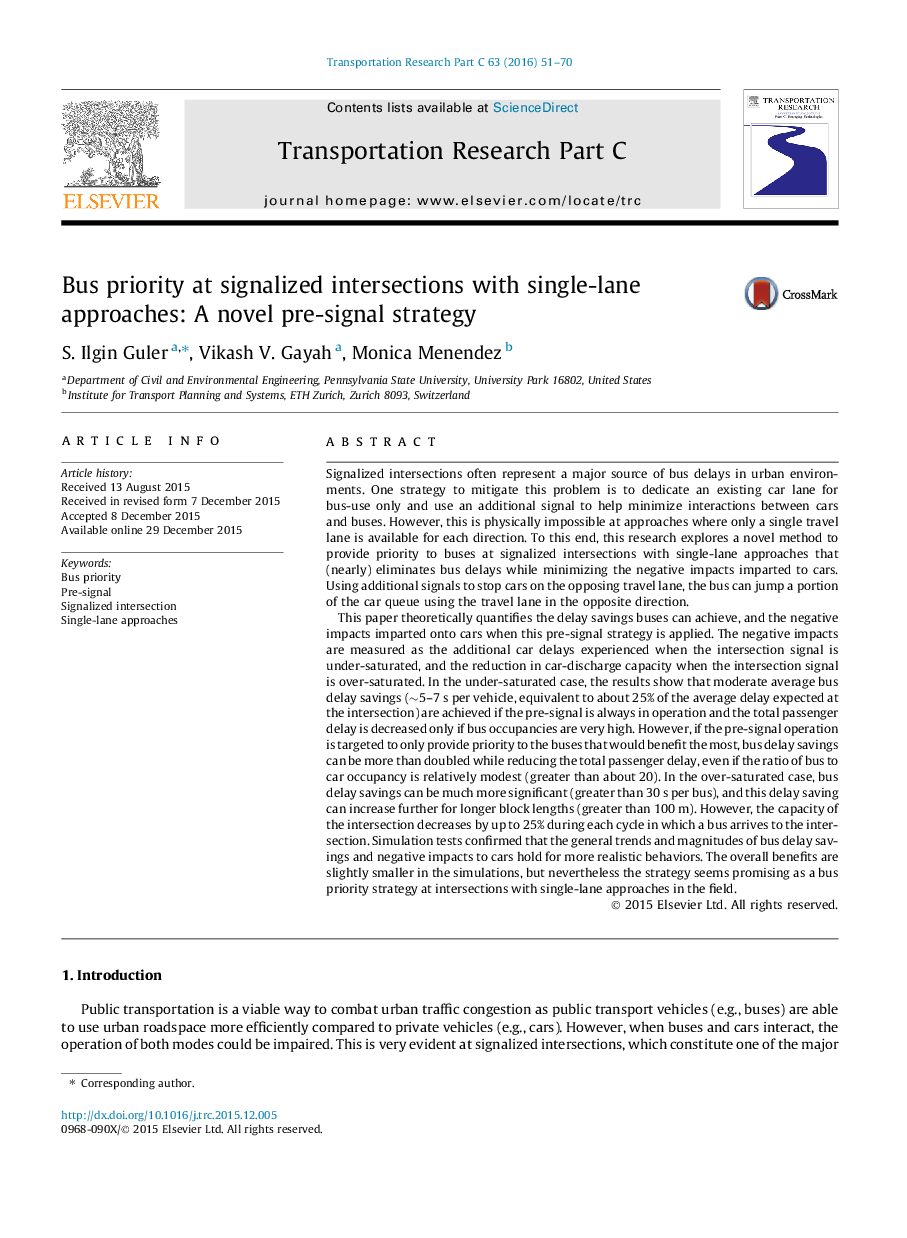| Article ID | Journal | Published Year | Pages | File Type |
|---|---|---|---|---|
| 526311 | Transportation Research Part C: Emerging Technologies | 2016 | 20 Pages |
•Method to provide bus priority at intersections with single lane approaches proposed.•Uses pre-signals to change direction and allocation of a travel lane.•Analytical models for undersaturated and oversaturated intersections created.•Domains of application that reduce total person delay are constructed.•Simulation is used to verify analytical findings.
Signalized intersections often represent a major source of bus delays in urban environments. One strategy to mitigate this problem is to dedicate an existing car lane for bus-use only and use an additional signal to help minimize interactions between cars and buses. However, this is physically impossible at approaches where only a single travel lane is available for each direction. To this end, this research explores a novel method to provide priority to buses at signalized intersections with single-lane approaches that (nearly) eliminates bus delays while minimizing the negative impacts imparted to cars. Using additional signals to stop cars on the opposing travel lane, the bus can jump a portion of the car queue using the travel lane in the opposite direction.This paper theoretically quantifies the delay savings buses can achieve, and the negative impacts imparted onto cars when this pre-signal strategy is applied. The negative impacts are measured as the additional car delays experienced when the intersection signal is under-saturated, and the reduction in car-discharge capacity when the intersection signal is over-saturated. In the under-saturated case, the results show that moderate average bus delay savings (∼∼5–7 s per vehicle, equivalent to about 25% of the average delay expected at the intersection) are achieved if the pre-signal is always in operation and the total passenger delay is decreased only if bus occupancies are very high. However, if the pre-signal operation is targeted to only provide priority to the buses that would benefit the most, bus delay savings can be more than doubled while reducing the total passenger delay, even if the ratio of bus to car occupancy is relatively modest (greater than about 20). In the over-saturated case, bus delay savings can be much more significant (greater than 30 s per bus), and this delay saving can increase further for longer block lengths (greater than 100 m). However, the capacity of the intersection decreases by up to 25% during each cycle in which a bus arrives to the intersection. Simulation tests confirmed that the general trends and magnitudes of bus delay savings and negative impacts to cars hold for more realistic behaviors. The overall benefits are slightly smaller in the simulations, but nevertheless the strategy seems promising as a bus priority strategy at intersections with single-lane approaches in the field.
